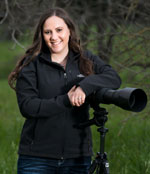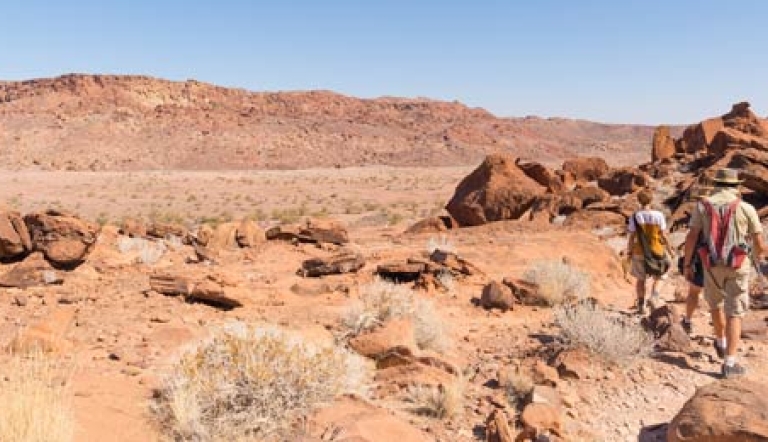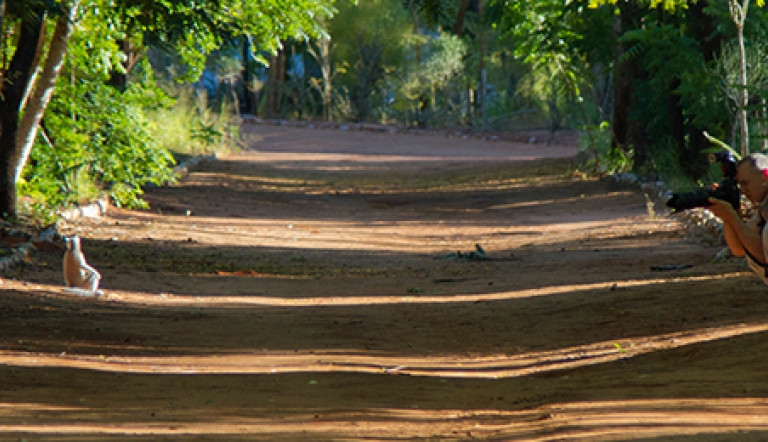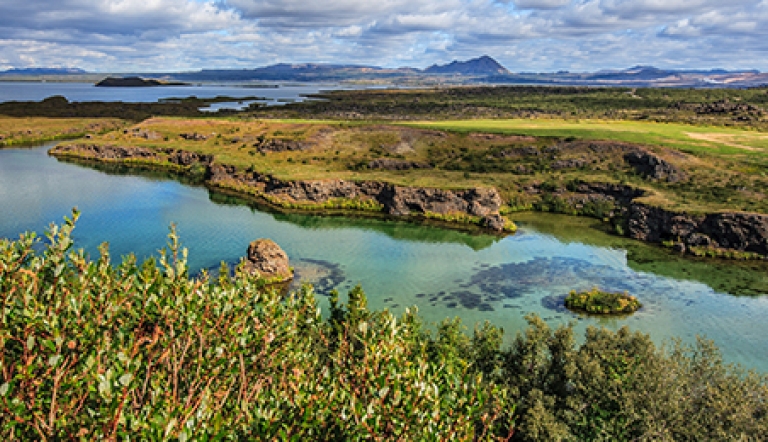About this trip
 Namibia is packed with photographic potential. The oldest desert in the world, the Namib, dominates the country’s landscape. Take time to capture images in surrounding safari areas with exquisite flora, towering red dunes, bush country, and fascinating geological formations. Game drives in Etosha National Park include the “Big Five”—elephants, rhinos, buffalos, lions and leopards—as well as giraffes, zebras, wildebeest, antelopes, and more. Plus, learn about the conservation of cheetahs with the Cheetah Conservation Fund and about Namibia’s cultural history.
Namibia is packed with photographic potential. The oldest desert in the world, the Namib, dominates the country’s landscape. Take time to capture images in surrounding safari areas with exquisite flora, towering red dunes, bush country, and fascinating geological formations. Game drives in Etosha National Park include the “Big Five”—elephants, rhinos, buffalos, lions and leopards—as well as giraffes, zebras, wildebeest, antelopes, and more. Plus, learn about the conservation of cheetahs with the Cheetah Conservation Fund and about Namibia’s cultural history.
Highlights
- Create images of native wildlife and landscapes.
- Learn about the importance of conducting ethical field practices when photographing wildlife.
- Learn about the local ecology and biodiversity of the region.
- Expand your understanding of which camera settings to use in different scenarios.
- Learn how to create storytelling images that support conservation efforts to protect the subjects that we photograph.
Meet your leader
 Jennifer Leigh Warner
Jennifer Leigh Warner
Jennifer Leigh Warner is a Fine Art Conservation Wildlife Photographer living in California who specializes in creating meaningful images that convey a message of hope for the natural world. Jennifer feels strongly that by sharing these images of beautiful animals in their natural environment, she can inspire those around her to preserve the world that we share with all living creatures.
As the Committee Chair of the North American Nature Photography Association’s Ethics Committee, Jennifer promotes the ethical practice of photographing wildlife.
She was born and raised in the state of Washington, and the Pacific Northwest allowed her to appreciate the beauty of the natural world around her. She spent most of her formative years traveling around the world gaining an admiration for the diversity of the unique places of this planet.
Jennifer started studying photography at an early age with an interest in capturing the natural places and creatures that inhabit this world. After graduating from the Edward R. Murrow College of Communication in 2005, she set off on her mission to preserve the world around her.
Jennifer works closely with conservation organizations to help support their missions to protect wildlife and the world around us. She believes that photography is a powerful tool to share these stories, educate photo viewers on important topics, and inspire change.
You can learn more about Jennifer and the conservation work that she does by visiting her website at: www.experiencewildlife.com
$8,995
Per person
About this price
Land cost only. Does not include round-trip airfare to and from destination.
Single room supplement $595
What makes us different
Wildlife up-close
Service anytime
We know what photographers need
Low stress travel planning
Expert guides
Flight arrangements
Daily Itinerary
Print ItineraryDepart US
Windhoek
Sossusvlei
Sossusvlei
Swakopmund
Swakopmund
Etosha National Park
Etosha National Park
Etosha National Park
Otjiwarongo
Otjiwarongo
Erindi Reserve
Erindi Reserve
Departure
Arrival US
Pricing
Print Pricing$8,995
Per person
About this price
Land cost only. Does not include round-trip airfare to and from destination.
Single room supplement $595
What's Included
- Accommodations with private bathrooms
- Activities and meals as mentioned in itinerary
- All tips
- Arrival and departure transfers based on individual flight schedules
- Bottled water or water refill station during transfers
- Carbon Offset
- Full time driver/guide for the duration of your program
- Non alcoholic beverage with meals
What's Not Included
- International flights
- Items of personal nature
- Travel Insurance
Pricing Details
A $1000 per person deposit and enrollment form is due to hold your space on this trip. This deposit is refundable 180 days prior to departure excluding a $500 cancellation fee. Cancellations after this date are non refundable.
Please note: Your participation as a traveler indicates acceptance of Holbrook Travel’s Covid-19 protocols in place at time of travel.
Holbrook Travel strongly recommends the purchase of travel insurance for medical emergencies while traveling and to protect your investment. Please note the purchase of Cancel for Any Reason Coverage or to exclude pre-existing conditions with Trip Cancellation coverage may require policy purchase within 10-14 days of your initial deposit, depending upon the provider.
Single room supplement $595
Final payment due date: March 01, 2022
Travel Info
Print Travel InfoEntry & Exit Requirements
U.S. and Canadian citizens must have a valid passport to enter Namibia. Passports must be valid for at least six months after the date of departure. Passports must have 6 or more blank passport pages.
For visits fewer than 90 days, visas will be issued upon arrival in Namibia.
If you are not traveling with a U.S. passport, please check with the Embassy of Namibia for the requirements based on your nationality.
Health Information
IMMUNIZATIONS
The Centers for Disease Control recommends that all travelers be up to date on routine vaccinations such as measles-mumps-rubella (MMR) vaccine, diphtheria-pertussis-tetanus vaccine, varicella (chicken pox) vaccine, and your yearly flu shot before every trip.
There are no vaccinations required for entry into Namibia.
Some physicians recommend that travelers get hepatitis A and typhoid vaccines before visiting Namibia.
Please consult your physician for additional information and recommendations based on your individual circumstances.
MALARIA
The CDC warns that travelers to Africa may be at risk for exposure to malaria. Malaria is caused by a parasite found in Anopheles mosquitos, which are active from dusk until dawn. Prevention is twofold: the use of anti-malarial drugs and the prevention of insect bites. If you choose to use an anti-malarial drug, as recommended by the CDC, see your physician for a prescription.
SUN EXPOSURE
The effects of the sun can be damaging to the eyes and skin. Spending time outdoors exposes you to the sun’s harmful ultraviolet (UV) rays, even on cloudy days. To protect yourself from the sun, use a broad spectrum sunscreen of at least SPF 15, protect skin with clothing, wear a wide-brimmed hat and sunglasses, and drink plenty of fluids.
Resources
Print ResourcesSuggested Packing List
Everyone has personal preferences when it comes to packing; for this reason, the information below is offered as a general guide and not a definitive list. You know yourself best: Use your discretion and pack what you think will serve you, based on your personal preferences and specific itinerary. You may find many of these items in our Gear Store.
CLOTHING
Casual, comfortable clothing is suitable for most activities. You may wish to bring a slightly nicer outfit or two if your itinerary includes dinners out or more formal activities. Be prepared to dress in layers to adjust to temperature changes throughout the day. Laundry services are available for a fee at most accommodations.
For safaris, bring clothes in neutral or muted colors such as green, khaki, brown, or gray. We recommend that you avoid wearing bright colors or white as they can easily be spotted by animals. In addition, blue is particularly attractive to certain insects and should be avoided.
- Lightweight, casual clothes that can be worn in layers; a combination of short and long sleeves (for sun and insect protection)
- Sweater and scarf
- A lightweight wind-breaker
- Hat with ties
- Buff or bandana
- Bathing suit
- Comfortable, closed-toe walking or hiking shoes with thorn-proof soles
- Sandals
MISCELLANEOUS
- Binoculars and lens cleaner
- Camera, extra memory cards, and batteries
- Flashlight or head lamp
- A small backpack for day walks
- Photocopies of passport and other travel documentation
- Prescription drugs and a copy of the prescription
- Personal toiletries
- Sunscreen
- Sunglasses
- Insect repellent
- Spare batteries
- Spare glasses
- Chargers, converter, and adapter for electronics
FIRST AID KIT
In addition to your personal toiletries, it is useful to pack a small medical kit, which you can easily prepare. Helpful items might include: bandages, antihistamine, a pain reliever, motion sickness and/or altitude sickness medication (if you are prone to either), anti-diarrhea medicine, individually wrapped pre-moistened towelettes and/or hand sanitizer, antibiotic ointment, anti-fungal cream, moleskin for blisters, eye drops, tweezers, a mini sewing kit, and an extra pair of disposable contact lenses or eyeglasses if you wear them.
Question
Contact Sandy Schmidt at 877-907-5360 or email Sandy.





